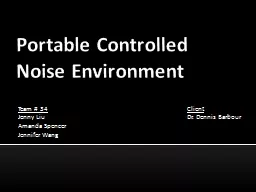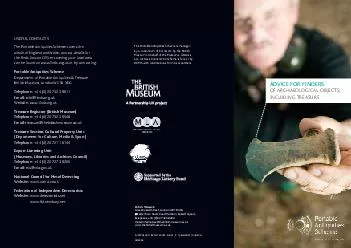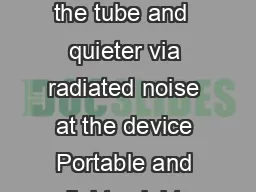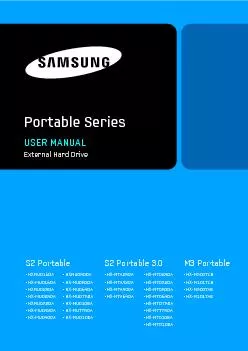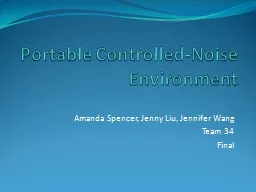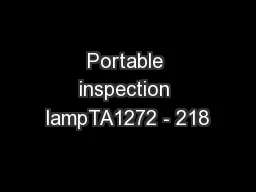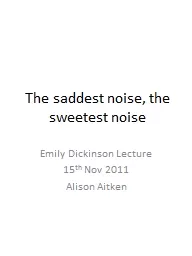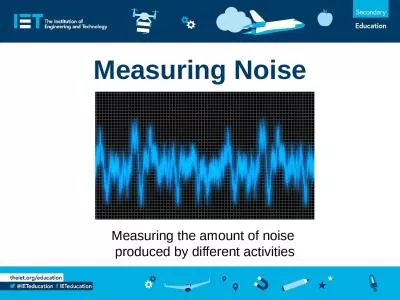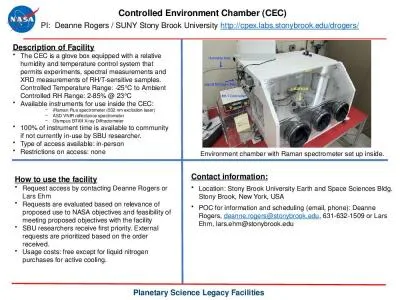PPT-Portable Controlled Noise Environment
Author : aaron | Published Date : 2017-11-03
Team 34 Jenny Liu Amanda Spencer Jennifer Wang Client Dr Dennis Barbour Background Hearing Loss Hearing loss affects about 30 million adults 1 Can be treated
Presentation Embed Code
Download Presentation
Download Presentation The PPT/PDF document "Portable Controlled Noise Environment" is the property of its rightful owner. Permission is granted to download and print the materials on this website for personal, non-commercial use only, and to display it on your personal computer provided you do not modify the materials and that you retain all copyright notices contained in the materials. By downloading content from our website, you accept the terms of this agreement.
Portable Controlled Noise Environment: Transcript
Download Rules Of Document
"Portable Controlled Noise Environment"The content belongs to its owner. You may download and print it for personal use, without modification, and keep all copyright notices. By downloading, you agree to these terms.
Related Documents

